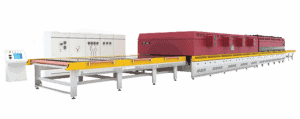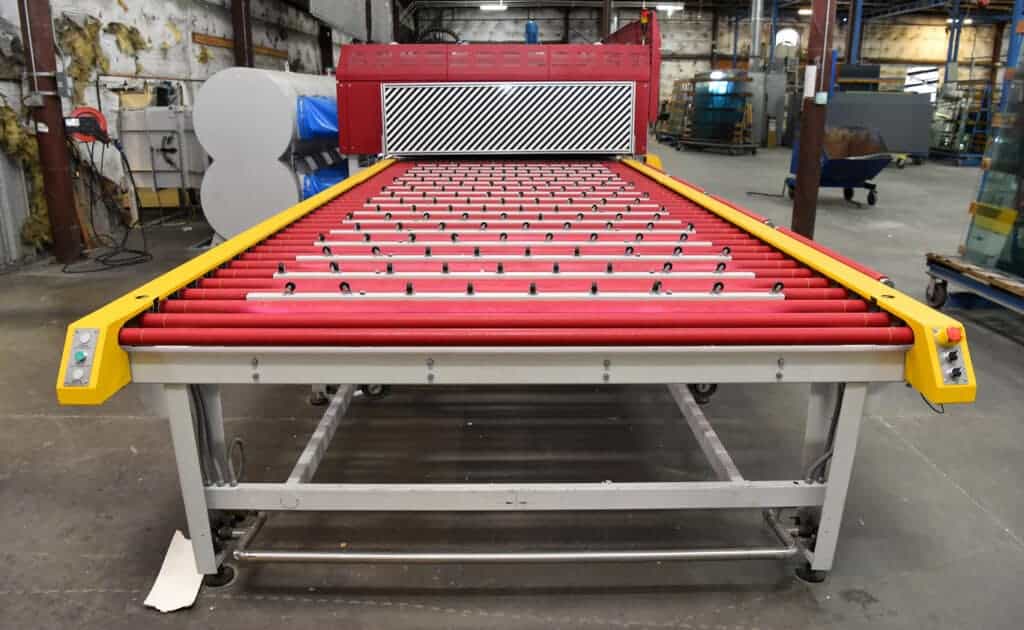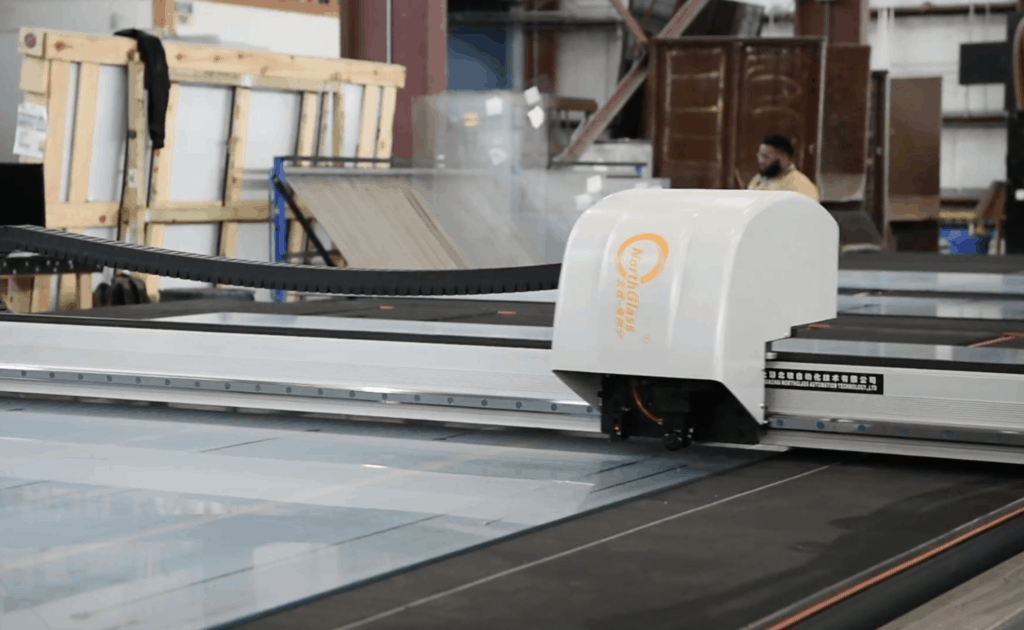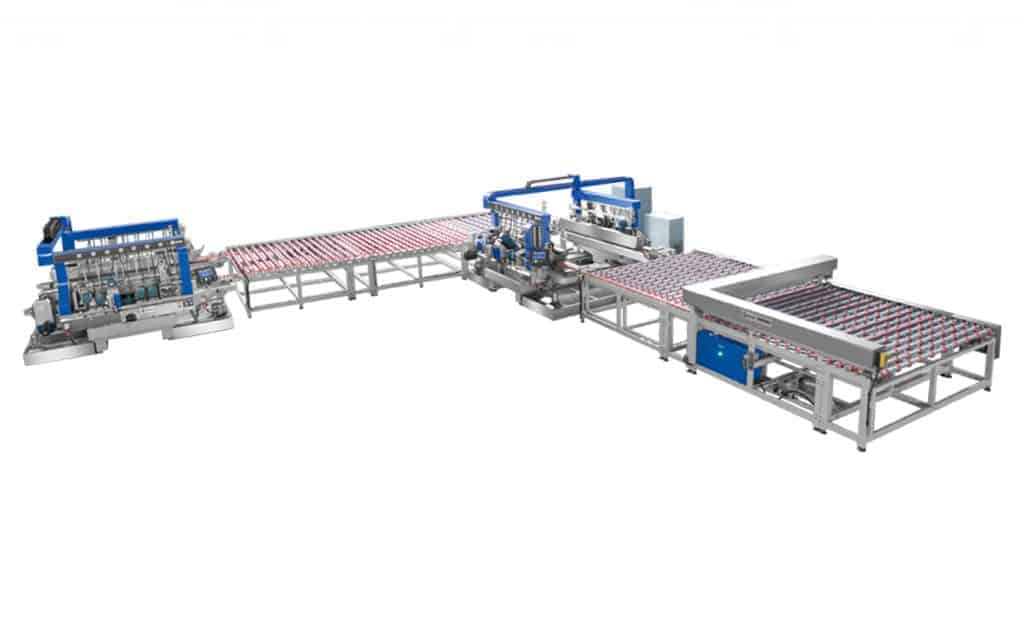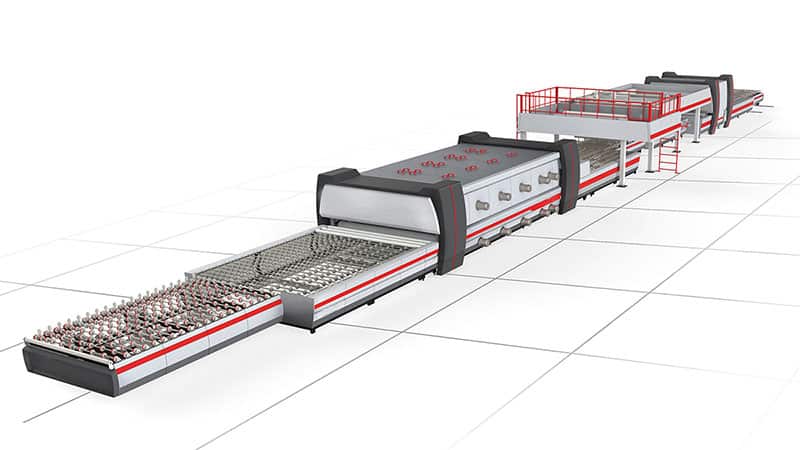Your tempering furnace questions, answered
Whether it’s large glass storefronts or glass phone screens, tempered glass is a commonly used to protect products and people. Therefore, the tempering process is crucial. Tempering furnaces use heat to strengthen and prepare glass for use in a variety of applications. There’s a wide variety of tempering furnaces to choose form, depending on glass type and the fabrication company’s capabilities, volume and size.
What is a tempering furnace?
A tempering furnace is a type of industrial oven that uses heating technology. The heat strengthens finished pieces of glass and makes them safer in the event that they would break. This piece of equipment is often found in glass fabrication and/or manufacturing facilities.
How is tempered glass made?
To temper the glass, tempering furnaces heat glass to an extremely high temperature, usually over 600 degrees Celsius. Then, using air jets, the furnace uniformly and rapidly cools the glass. The rapid cooling process is called quenching. It is during quenching that the glass undergoes extreme compression and gains strength against impacts and heat shock.
The heating and cooling process that happens during tempering strengthens the glass and decreases the risk of breakage or shattering. However, in the event that the tempered glass does break, it shatters into several tiny pieces with spherical edges rather than large, sharp shards. This reduces the risk of serious injury.
What is tempered glass?
Tempered glass is a product made to be safer than other types of glass through a controlled heat treatment process that toughens, or strengthens, it. Because of this, you may sometimes hear tempered glass referred to as safety glass or toughened glass. Not only is glass that’s been treated by tempering furnaces stronger and safer, but it is also more bendable.
Some common applications for tempered glass include ovens, coffee machines, computer and phone screens, and windows and shower doors, to name a few.
Why use tempered glass?
Tempered glass has more benefits than standard glass. Glass tempering furnaces and the tempering process make tempered glass stronger and safer than standard glass. This reduces the risk of the glass shattering, or if the glass does break, reduces the risk of injury. Broken tempered glass is much easier to clean up than shattered standard glass. Aside from being safer and stronger, tempered glass has also been found to be more scratch-, damage- and heat-resistant. Because tempered glass offers more tensile strength it is considered bullet- and storm-resistant, making it the perfect glass for applications like storefront systems or commercial and residential doors and windows.
Types of tempering furnaces
HHH offers a complete line of various glass tempering furnaces. Our expert team of engineers is available to help you choose the tempering furnace model that best fits your business.
Convection glass tempering furnaces
A type of tempering furnace that ensures even heating, spotless glass and low energy use.
Radiation glass tempering furnaces
Perfect for small- to medium-sized companies, this type of tempering furnace uses external compressed air to feed the convection system.
Continuous tempering furnaces
A tempering furnace build for high volume, this furnace can produce up to 11,302 feet of tempered glass per hour.
Glass bending furnaces
A tempering furnace for fabricators who produce J- or R-shaped tempered glass.
Learn more about finding the right tempering furnace for your business needs by filling out the form below.
